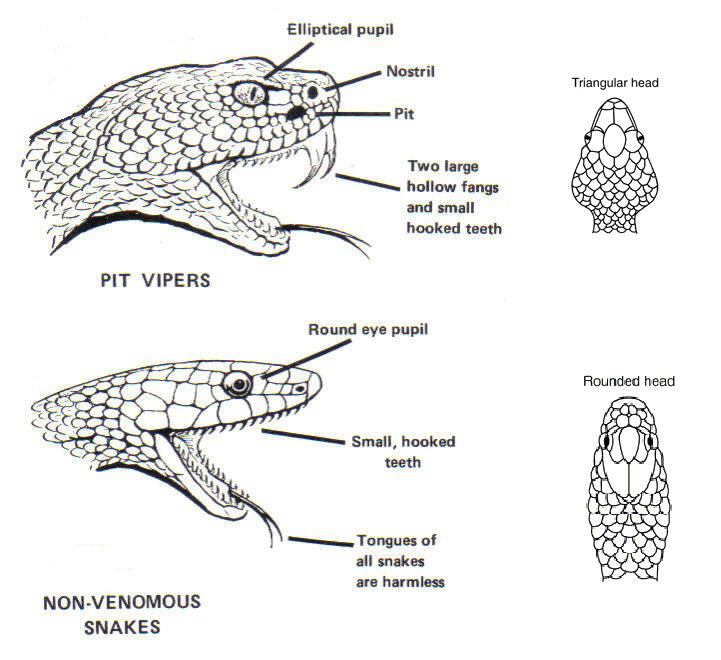There are many harmless snakes out there, yet a lot of people will see any snake and believe it’s dangerous. Very few people appear to be able to properly distinguish a venomous snake vs a harmless one. As a wildlife removal expert, I’m aware of the wildlife opinions of a lot of people. It seems that no animal in the world is more misunderstood than snakes.
The primary misconception is all snakes are dangerous and should be feared. Also, snakes are constantly misidentified. I’ve heard a great deal more incorrect identifications in my lifetime than correct. Of course, a large number of false identifications declare snakes being poisonous. And because of this false identification they are, more often than not, killed.
Venomous vs. Poisonous
First off, snakes are venomous, not poisonous. Venom is an active combination of peptide toxins and nuclease enzymes, which connect with proteins. To be classified a venom, it must be actively injected via fangs, stinger, or any other means of injection. A poison is any type of toxin which is ingested, inhaled, or absorbed through the skin which makes one sick.
Next, we’ll examine most common myths that I hear repeatedly which lead individuals to believe that they’ve spotted a venomous snake.
It Has a Triangular Head
Pretty much all snakes have triangular heads. Some don’t, although some venomous snakes don’t either! One of central Florida’s four venomous species, the Coral Snake, doesn’t have a triangular head.
It Rattles Its Tail
Yes, many varieties of snakes rattle their tails if they feel threatened. It’s quite normal snake behavior. Rattlesnakes developed noisy tails to amplify this habit, thereby making a loud warning. But the harmless snakes that rattle may hit dry leaves or debris, so you would hear a noise. It does not mean it’s venomous. Look at the tail – can you see big, round rattles at the end of a fat snake? No? There’s a thin, tapered tail with nothing at the end? Not a rattler then.
It Has a Pattern and/or Bright Colors
Many people believe that a pattern, perhaps much like the Diamondback Rattler, means the snake is dangerous. Nope. Many snakes have patterns, and many actual venomous snakes have zero patterns. Same for color. Some venomous snakes are colorful and some are not. The same goes for non-venomous snakes.

Source: bosque.agrilife.org
The truth is that there is no simple method to identify a venomous snake by observing certain traits. To be honest, the most effective method could possibly be the snake’s thickness – most venomous snakes in North America are pit vipers, which are fat snakes. Outside of red, black, and yellow coral snakes, if a snake is thin, it’s most likely okay. But most water snakes are fat, which means this method doesn’t always apply.
Play it Safe
The best method to identify a snake is to view photos of local venomous snakes – just make a web search for “venomous snakes of [state]” and you should see photos. But the very best method to avoid a snake problem is to simply leave every snake alone. If it’s dangerous, you really don’t want to touch it (as most snakebites occur during efforts to handle or kill snakes). If it’s harmless, you should leave it alone anyway as it is good to have around to deal with other pests!
Call Attic Kings today and our trained snake removal specialists will come to deal with the problem.
